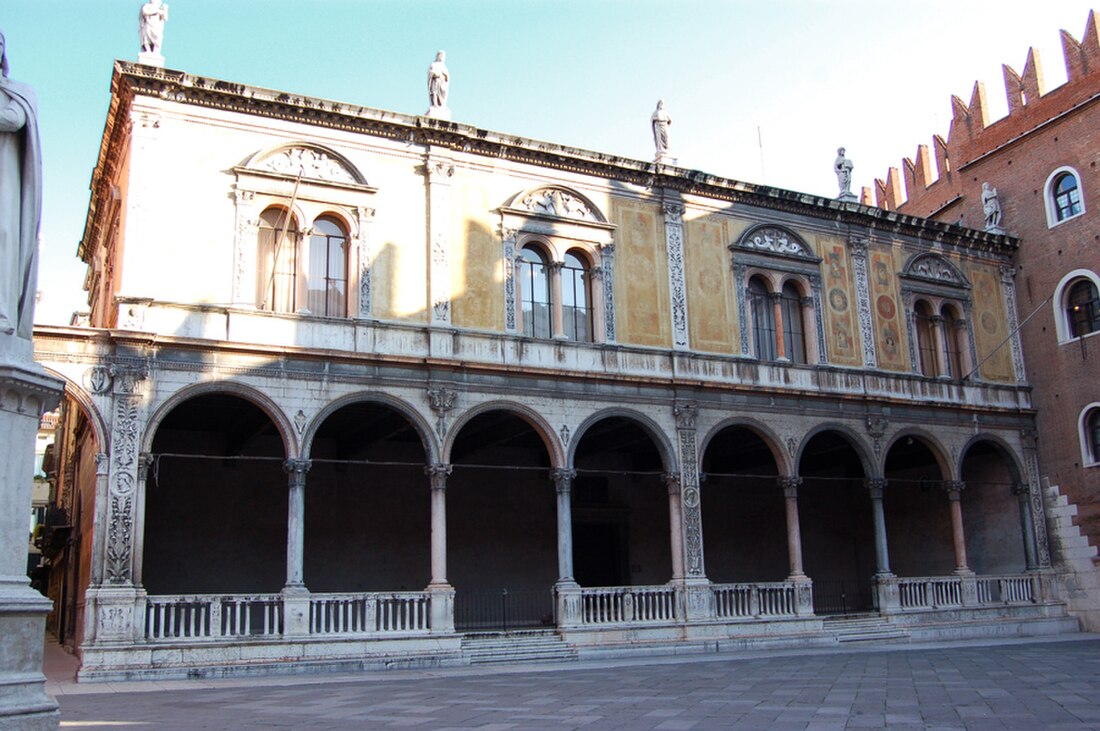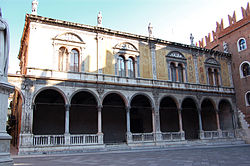Province of Verona
one of seven provinces in the Italian region Veneto From Wikipedia, the free encyclopedia
Remove ads
The Province of Verona (Italian: Provincia di Verona) is a province in the Veneto region of Italy. Its capital is the city of Verona.
Remove ads
Remove ads
Geography
The province of Verona has an area of 3,096.39 km2 (1,195.52 sq mi), the second largest province in the Veneto region, after the Belluno province, and is the most western of the provinces of the region. Most of its territory is almost flat, with few mountains. The highest point of the province is Cima Valdritta, that is 2,218 m (7,277 ft) high.[4]
The main river in the province is the Adige; it flows through the capital of the province. To the west of the province is the Lake Garda (Italian: Lago di Garda), the largest lake of Italy.
The climate in the city of Verona is Humid Subtropical climate (Köppen climate classification: Cfa).[5]

The province of Verona borders to the north with the Trento (Trentino-Alto Adige/Südtirol region), to the east with the Vicenza and Padua provinces, to the southeast with the Rovigo province, to the south and west with the Lombardy region (Mantua province) and to the northwest with the Brescia province (Lombardy region).
Remove ads
Population
As of 1 January 2016[update], there are 922,383 persons living in the province,[3] for a population density of 297.9 inhabitants/km².
Evolution of the population

Municipalities
There are 98 municipalities (or comuni) in the province; they are:
- Affi
- Albaredo d'Adige
- Angiari
- Arcole
- Badia Calavena
- Bardolino
- Belfiore
- Bevilacqua
- Bonavigo
- Boschi Sant'Anna
- Bosco Chiesanuova
- Bovolone
- Brentino Belluno
- Brenzone sul Garda
- Bussolengo
- Buttapietra
- Caldiero
- Caprino Veronese
- Casaleone
- Castagnaro
- Castel d'Azzano
- Castelnuovo del Garda
- Cavaion Veronese
- Cazzano di Tramigna
- Cerea
- Cerro Veronese
- Cologna Veneta
- Colognola ai Colli
- Concamarise
- Costermano sul Garda
- Dolcè
- Erbè
- Erbezzo
- Ferrara di Monte Baldo
- Fumane
- Garda
- Gazzo Veronese
- Grezzana
- Illasi
- Isola della Scala
- Isola Rizza
- Lavagno
- Lazise
- Legnago
- Malcesine
- Marano di Valpolicella
- Mezzane di Sotto
- Minerbe
- Montecchia di Crosara
- Monteforte d'Alpone
- Mozzecane
- Negrar
- Nogara
- Nogarole Rocca
- Oppeano
- Palù
- Pastrengo
- Pescantina
- Peschiera del Garda
- Povegliano Veronese
- Pressana
- Rivoli Veronese
- Roncà
- Ronco all'Adige
- Roverchiara
- Roverè Veronese
- Roveredo di Guà
- Salizzole
- San Bonifacio
- San Giovanni Ilarione
- San Giovanni Lupatoto
- San Martino Buon Albergo
- San Mauro di Saline
- San Pietro di Morubio
- San Pietro in Cariano
- San Zeno di Montagna
- Sanguinetto
- Sant'Ambrogio di Valpolicella
- Sant'Anna d'Alfaedo
- Selva di Progno
- Soave
- Sommacampagna
- Sona
- Sorgà
- Terrazzo
- Torri del Benaco
- Tregnago
- Trevenzuolo
- Valeggio sul Mincio
- Velo Veronese
- Verona
- Veronella
- Vestenanova
- Vigasio
- Villa Bartolomea
- Villafranca di Verona
- Zevio
- Zimella
The largest comune is Verona, with 198.92 km2 (77 sq mi) and the smallest is Concamarise, with 7.91 km2 (3 sq mi). The comune with fewest inhabitants is Ferrara di Monte Baldo, with 226 inhabitants.
Main comuni
The following shows the 10 comuni with more inhabitants with their population,[3] and their area and altitude.[6]
Remove ads
Gallery
- City wall in Villafranca di Verona.
- Duomo di San Martino Vescovo, Legnago.
- Palazzo Municipale, San Giovanni Lupatoto.
References
Other websites
Wikiwand - on
Seamless Wikipedia browsing. On steroids.
Remove ads









